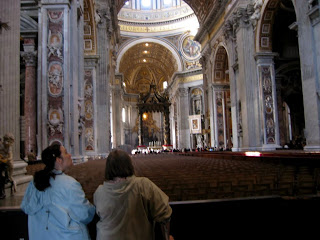Piazza Venezia
Palazzo Venezia was built by cardinal Pietro Barbo who later became Pope Paul I in 1455. It is built around the church of San Marco and was used as a papal residence by many popes. Benito Mussolini spoke to the crowds from the first floor of Palazzo Venezia. When the Vittorio Emmanuelle monument was built the Palazzo was moved and the Assicurazioni Generali di Venezia palace was built.
On the southern side of the piazza one can find a truly monumental structure, which almost dominates the entire piazza. It is an impressive and beautiful complex built between1885 and 1905 to celebrate the unification of Italy. It is officially known as the Altar of the Fatherland. Many ancient and medieval structures were razed to build this monument. An impressive staircase rises to the top of the Altar of the Fatherland. A statue of the goddess Roma adorns the center. Two lateral staircases lead to the 12 metre high statue of King Vittorio Emmanuelle II. In the last century piazza Venezia was considered as a worthy place for the monument of king Vittorio Emmanuelle II.
This is one of the few structures in Italy, which arouses an ambivalent attitude in its citizens, and almost everyone has his or her own individual opinion on it. In 1921 the tomb of the Unknown Soldier was incorporated into the monument.
Towards the left behind the monument one can find the Risorgimento Museum. This is a museum, which is dedicated to the cause of the nationalist movement. This brought on the resurgence of the Italian movement, which lead to the unification of Italy in 1861by the coming together of many little states under the House of Savoy Via Corso meets piazza Venezia it its northern end. Palazzo Bonaparte lies on the western corner of the piazza and the Corso. This is where Napoleon’s mother lived after the fall of the French empire.
This piazza is one of the busiest and most happening areas since it is in the bus route of almost all the buses which run through the city so it is a frequently visited square in Italy which takes pride in both its modernity and antiquity.


























































